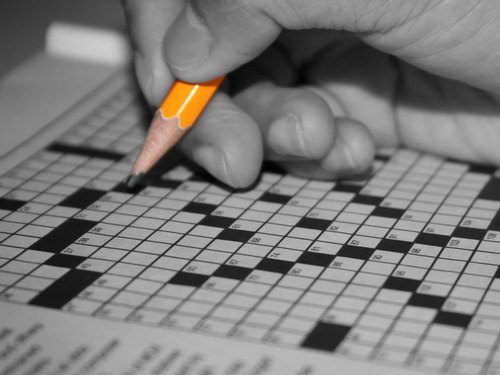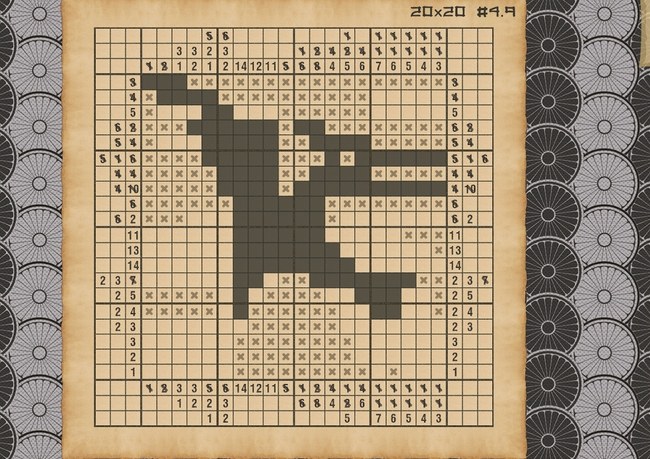Tip 1: How to Solve Colored Japanese Crosswords
Tip 1: How to Solve Colored Japanese Crosswords
I must say that the solution of Japanesecrossword puzzles - no less fascinating occupation than the solution of ordinary, although in Japanese are hidden not words, and pictures. Of course, this is a more complicated process, but if you study the rules of "guessing", then you can achieve the desired result.

Instructions
1
Before guessing the Japanese crossword puzzle,understand that it is made up of several colors and is based on two main requirements - you need to find areas of guaranteed shaded cells and identify places that do not have them. The puzzle itself consists of rows and columns, and the playing field is divided into squares, and each of them "rests" on one row and column.
2
The image hidden in the crossword is encrypted withusing numbers. Each of the rows and each of the columns "start" with a series of numbers that indicate the number of consecutive colored cells. So if in the line 5 and 3 are inscribed, this means that there should be two painted blocks of five and three cells, respectively. Between blocks there are empty cells, which can be as many as you like, but not less than one. In general, guessing the Japanese crossword is to determine the number of unfilled cells between the colored ones.
3
To help you not be confused, empty cellsmark with a cross or put a dot in them. Begin to solve the "Japanese" from the column or line, in which the highest numbers are indicated. In a color crossword, they are of different colors. If onecolored numbers stand in a row, then at least one empty cage must be located between them. Otherwise (for example, behind a block of red color there is a block of blue) this gap may not exist.
4
The main difference between color and black and white Japanesecrosswords is the presence of the first three or more colors of cells. In this case, in the color-coded cell between the commands, it may not be empty. That is, when deciding a black-and-white variant, one should proceed from the assumption that one block of painted cells is necessarily separated from the other by at least one blank cell, which is taken into account in the calculations. In the same color group of cells can be located without gaps, next to each other. The rest of the guessing of the color Japanese crossword puzzle is based on the same principles as the guessing of black and white.
5
It should be noted that the Japanese crossword is enoughcomplex and paint the cells of the playing field at random effectively does not work. Also, do not try to solve this puzzle on the go, because to solve the task you need not only to have a few colored pencils, but also to systematically change them.
Tip 2: How to guess Japanese crossword puzzles
Japanese crossword puzzle means recoverythe encrypted image on the specified field. The numbers at the top and side indicate how many cells in the row should be filled in the given row or column. The order in which these numbers are specified determines the order of coloration of cells: from bottom to top and from left to right. If there are several numbers in the column or row, then between the filled cells, you must leave a gap of at least one empty cell.

Instructions
1
2
While it is impossible to determine exactly how they are placed. Possible location at the top or at the bottom edge of the field. However, the middle three cells enter the closed area in any case. Paint them.
3
4
5
6
Tip 3: How to solve Japanese crossword puzzles
Many fans of puzzles believe thatto solve Japanese crossword puzzles is much more interesting than usual. After all, they are based on the laws of logic and do not depend on the level of general erudition, so in their decision even children successfully compete with adults.

An ordinary Japanese crossword is divided intocell field that contains an encrypted image. The player's task is to correctly fill in the cells and get a picture based on the prompts. About each row or column is given information about the number of cells that need to be painted over. A string can contain several groups of filled cells, between which there must necessarily be a space of at least one cell.
To successfully solve Japanese crossword puzzles, you need to prepare a pencil and an eraser to correct possible errors and follow a simple algorithm.
- Select the rows and columns that will be filled in completely. That is, those in which the number of shaded cells coincides with their total number.
- Now pay attention to the lines in whichobviously the arrangement of groups of colored cells and a gap between them. For example, if a string consists of 13 cells, and you need to fill in with 5 and 7, then there is only one way to do this. Mark empty cells with a cross or a dot.
- Look for options in which you can confidentlypaint at least some of the cells in the line. If you need to paint 15 of 20 cells, from wherever you start counting, 10 cells in the middle can be exactly shaded.
- It is already possible to understand which cells will remain empty. For example, you should fill in 7 cells in a column, and the second, third or any cell up to the seventh above or below is already marked with a cross. Hence everything that between it and the edge of the crossword, too, do not need to paint over.
- Check all the columns and rows. Maybe you already shaded somewhere the necessary number of cells. Mark all the other crosses.
- Repeat all steps first. With each new move the picture changes, and you get additional information. Pay attention to the space between the crosses. It can accurately correspond to the number of filled cells or, conversely, will allow you to exclude it from the image.
The hardest way to solve the Japanese crossword puzzles is towhich have few continuous solid lines. It is easier to locate one large group of cells than to try and guess how to place 5 groups of 3 or 4 cells in a long line. It is these situations that cause the most questions among beginners. In this case, outline all possible options with thin lines. In practice, there are not many of them at all. You will see that some cells will be painted in any case.
In addition to traditional black and white crossword puzzlesthere are also colored ones. Their main difference is that there can be no gap between cells of different colors. They just seem more complicated. In fact, the principle of their solution is the same. Start with monophonic lines. By the time you reach groups of different colors, you will already have something to push off.
Patience, attention and logic - that's what you need to remember when you pick up a new crossword.
Tip 4: How to solve Chinese crossword puzzles
Japanese Crosswords require, unlike traditional, not erudition, but logical thinking. So if you want to develop the ability to think logically, buy a collection of Japanese crossword puzzles, and get down to business.

Instructions
1
Prepare a pencil and an eraser. Start always with the search for the largest digit or group of digits. Count how many cells will remain unshaded. Select those rows and columns that will be shaded completely (that is, those where the number of filled cells will match the sum of all the digits of the group).
2
After you pay attention to those lines in whichBetween groups of shaded cells there will be at least one gap. For example, if a string consists of 11 cells, and you need to fill in with 5 and 5, then the space between the two shaded parts of the line has 5 cells each. Mark all unoccupied cells with a cross.
3
Consider carefully the crossword field. Look for options in which you can confidently shade a portion of the cells in a row. If 10 cells are to be shaded 7, then no matter where you start to count, 4 cells in the middle of the line will be shaded.
4
As the crossword puzzle is solved,a picture appears, and you can already understand which cells should be left empty and which ones should be painted over. For example, you have to paint 7 cells in one of the columns, and 2, 3, etc. up to the 7th from above are already marked with crosses. This means that between them and the edge of the crossword, nothing should be shaded.
5
Constantly check all the rows and columns: have you shaded somewhere already the required number of cells. If yes, then mark the remaining cells with crosses in this column or row.
6
Learn first simple Japanese Crosswordsbefore taking on those that are notimply a large number of continuous colored lines. It is much easier to determine where the block of 9 filled cells is located, than to guess how to distribute several groups of 2-3 cells in one line. If you got such a crossword puzzle, mark all possible variants with a dotted line and choose the right one. Options are usually not so much.
7
Do not take for colored Japanese Crosswords, until you master black and white, because countingcolors and figures simultaneously requires the work of two hemispheres of the brain and developed abstract and figurative thinking that without training will be very tiring.
Tip 5: How to solve the Japanese crossword puzzle
The Japanese crossword (nanogram, griddler) isA special kind of puzzles, in which various images are encrypted. To date, Japanese nanograms are not inferior in popularity to conventional scanners and puzzles. Despite the seeming complexity, everyone can solve them.








